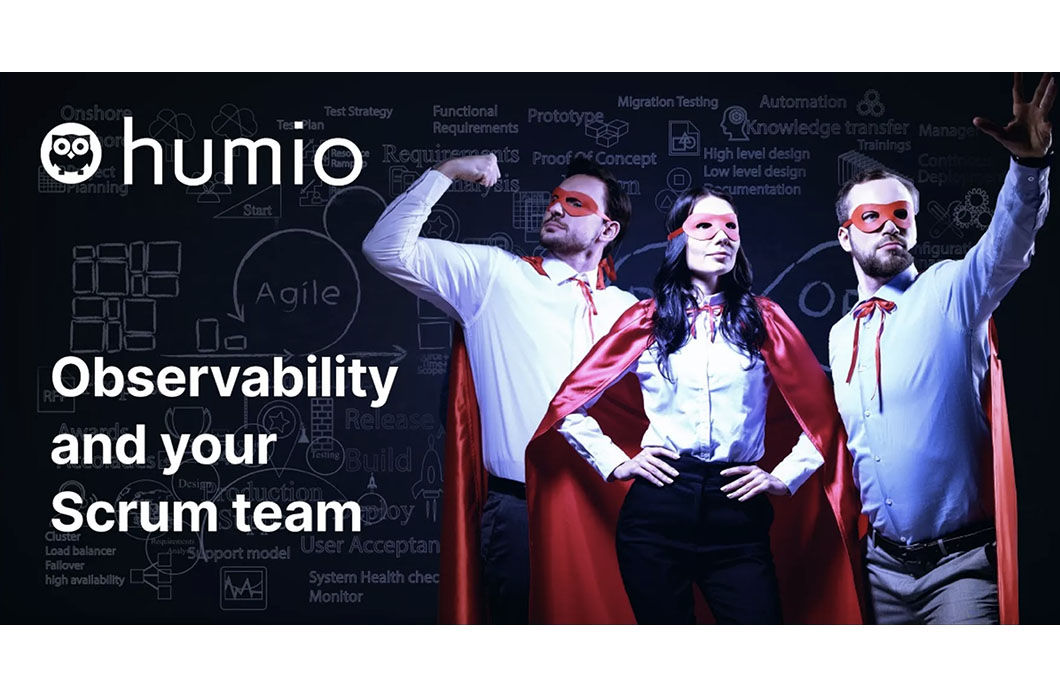This blog was originally published April 6, 2021 on humio.com. Humio is a CrowdStrike Company.
A Scrum master has two sets of responsibilities. The first responsibility, which most Scrum masters concentrate on, is to facilitate the Scrum process within the development team. The second and equally important responsibility is to promote the Scrum process externally. In other words, to educate the business on what it means to be agile. The observability that comes from logging everything can help with this often-neglected task. Development teams typically have their own monitoring tools that provide a narrow view of the IT environment. Developers see only the systems or applications they’re working on, with no context for what’s around them. This limited view keeps developers focused on their own work with little thought given to the impact of their decisions.
When organizations standardize their log formats and log everything in a centralized system, those data silos break down. Developers now have a complete view of the IT environment and they gain a better appreciation for how their contribution fits within the rest of the organization and the value chain.
This big-picture perspective delivers a number of benefits. Scrum masters can better understand the impact of their decisions based on where their deliverables fit within the organization and apply that knowledge to make more appropriate decisions about what their team does. For example, Scrum masters can identify the stakeholders for the deliverable their team is producing and use that information to determine the best time to perform maintenance, to judge the severity of a problem when prioritizing issues to fix, to understand what metrics to measure and to determine which KPIs are relevant. This is agility at its finest.
Observability
Development teams typically have their own monitoring tools that provide a narrow view of the IT environment. Developers see only the systems or applications they’re working on, with no context for what’s around them. This limited view keeps developers focused on their own work with little thought given to the impact of their decisions.
When organizations standardize their log formats and log everything in a centralized system, those data silos break down. Developers now have a complete view of the IT environment and they gain a better appreciation for how their contribution fits within the rest of the organization and the value chain.
This big-picture perspective delivers a number of benefits. Scrum masters can better understand the impact of their decisions based on where their deliverables fit within the organization and apply that knowledge to make more appropriate decisions about what their team does. For example, Scrum masters can identify the stakeholders for the deliverable their team is producing and use that information to determine the best time to perform maintenance, to judge the severity of a problem when prioritizing issues to fix, to understand what metrics to measure and to determine which KPIs are relevant. This is agility at its finest.
Observabilityalso enables teams to identify issues before they become critical. Like an aircraft crash, an application or service going down is very rarely the result of one failure. It’s usually a sequence of failures. Having observability across the whole estate enables teams to identify one of these smaller failures before they escalate into a bigger problem. Achieving observability begins with making data available. This can be the biggest barrier given that many organizations still believe the
myths surrounding the concept of logging everything. Once you understand how to efficiently and cost effectively log everything, the next step is to standardize data formats and absolutes so that you start to recognize other teams’ data. Finally, set up and collaborate on dashboards and reporting that span components or project teams. Observability is just one benefit teams realize when organizations log everything. Read more about the
changes you can expect when you log everything.
Additional Resources
- Learn how to
choose observability tools to maximize value. - Listen to Humio’s CEO,
Geeta Schmidt,
share her perspective on observability in the premiere episode of The Hoot. - Read a customer case study to
learn how Netlify achieved observability at scale with Humio.






![Helping Non-Security Stakeholders Understand ATT&CK in 10 Minutes or Less [VIDEO]](https://assets.crowdstrike.com/is/image/crowdstrikeinc/video-ATTCK2-1?wid=530&hei=349&fmt=png-alpha&qlt=95,0&resMode=sharp2&op_usm=3.0,0.3,2,0)
![Qatar’s Commercial Bank Chooses CrowdStrike Falcon®: A Partnership Based on Trust [VIDEO]](https://assets.crowdstrike.com/is/image/crowdstrikeinc/Edward-Gonam-Qatar-Blog2-1?wid=530&hei=349&fmt=png-alpha&qlt=95,0&resMode=sharp2&op_usm=3.0,0.3,2,0)





















































